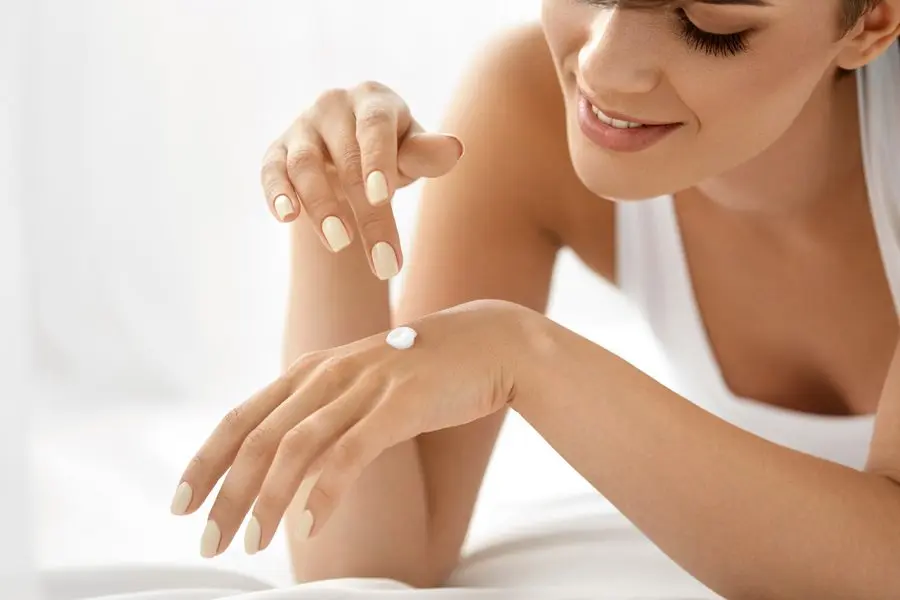
9 Common Skin Cancer Myths Debunked
Contents:
- MYTH: SKIN CANCER IS NOT DEATH.
- MYTH: SKIN CANCER ONLY AFFECTS OLDER ADULTS.
- MYTH: I AM NOT AT RISK OF SKIN CANCER IF I DO NOT SPEND LOTS OF TIME OUTSIDE.
- MYTH: PEOPLE WHO tan WITHOUT BURNING DON'T GET SKIN CANCER.
- MYTH: DARK SKIN PEOPLE SHOULD NOT WORRY ABOUT SKIN CANCER.
- MYTH: SUNROOMS ARE A GOOD OPTION FOR INCREASING VITAMIN D LEVEL.
- MYTH: MY DOCTOR CAN ALWAYS REMOVE MY UNUSUAL-LOOKING MOLE UNTIL IT GOES CANCER.
- MYTH: WHERE I'M FROM, THE WINTERS ARE LONG, SO I'M NOT AT RISK.
- MYTH: ONLY UVB RAYS CAUSE SUN DAMAGE.
Skin cancer is serious business. Fortunately, there are several ways to protect yourself from skin cancer, from application of SPF and stay out of the sun to perform at home ABCDE tests and a visit to the dermis for annual comprehensive exams. But to better protect yourself, it's also important to distinguish fact from fiction. According to American Society for Dermatological Surgery (ASDS)Skin cancer is the most commonly diagnosed form of cancer and often goes unnoticed due to misinformation. To stop the spread of lies, we debunk nine myths about skin cancer.
MYTH: SKIN CANCER IS NOT DEATH.
Unfortunately, skin cancer can be fatal. Melanoma, which accounts for the vast majority of skin cancer deaths, is almost always curable if detected in the very early stages. American Cancer Society. If not detected, it can spread to other parts of the body, making it difficult to treat. As a result, melanoma accounts for more than 10,000 of the more than 13,650 skin cancer deaths annually.
MYTH: SKIN CANCER ONLY AFFECTS OLDER ADULTS.
Don't believe it for a second. Melanoma is the most common form of cancer in young people aged 25 to 29 and is more common in women. ASDS. To prevent skin cancer at any age, it's important to wear sunscreen, look after your moles at home, and schedule regular appointments with your dermatologist.
MYTH: I AM NOT AT RISK OF SKIN CANCER IF I DO NOT SPEND LOTS OF TIME OUTSIDE.
Think again! According to ASDSHowever, even short-term daily exposure to UV rays—think driving with the sunroof open or dining outside during peak hours—can lead to significant damage, primarily in the form of squamous cell carcinoma. While not as deadly as melanoma, it is believed to be responsible for up to 20% of skin cancer-related deaths.
MYTH: PEOPLE WHO tan WITHOUT BURNING DON'T GET SKIN CANCER.
There is no healthy tan. It would be hard to find a pro-sunbathing dermatologist, as any change in your natural skin color is a sign of damage. According to ASDSEvery time the skin is exposed to UV radiation, there is an increased risk of developing skin cancer. Apply broad-spectrum sunscreen every day to protect your skin, and be sure to reapply frequently, wear protective clothing, and look for shade during peak sun hours to be especially careful.
MYTH: DARK SKIN PEOPLE SHOULD NOT WORRY ABOUT SKIN CANCER.
Not true! People with naturally dark skin have a lower risk of skin cancer compared to fair-skinned people, but they are certainly not immune from skin cancer, ASDS says. Everyone should take the necessary precautions to protect their skin from sun exposure and subsequent UV damage.
MYTH: SUNROOMS ARE A GOOD OPTION FOR INCREASING VITAMIN D LEVEL.
Vitamin D is obtained under the influence of UV rays. According to the Skin Cancer Foundation, the lamps used in tanning beds typically use only UVA rays and are a known carcinogen. A single indoor tanning session can increase your chances of developing melanoma by 20 percent, and each session for one year can increase your risk by almost another two percent.
MYTH: MY DOCTOR CAN ALWAYS REMOVE MY UNUSUAL-LOOKING MOLE UNTIL IT GOES CANCER.
Don't assume that your doctor can remove your mole before it becomes cancerous, especially if you notice a change in the color or size of the mole. Without annual skin checks, you may already be at risk without even knowing it, especially if you fail the ABCDE self-examination. In this case, it is extremely important to see a doctor or licensed skin specialist as soon as possible.
MYTH: WHERE I'M FROM, THE WINTERS ARE LONG, SO I'M NOT AT RISK.
LYING! The intensity of the sun may be lower in winter, but as soon as it snows, you increase the risk of sun damage. Snow reflects the harmful rays of the sun, increasing the risk of sunburn.
MYTH: ONLY UVB RAYS CAUSE SUN DAMAGE.
It is not true. Both UVA and UVB can cause sunburn and other forms of sun damage that can potentially lead to skin cancer. You should be looking for a sunscreen that can provide protection from both - look for the term "broad spectrum" on the label. We recommend La Roche-Posay Anthelios Mineral Moisture Cream SPF 30 with Hyaluronic Acid to protect against harmful sun rays while reducing the appearance of existing sun damage and discoloration.
Editor's note: Signs of skin cancer are not always obvious. That's why Skin cancer recommends that everyone practice a head-to-toe self-examination in addition to annual checkups to make sure all moles and birthmarks are in good condition. In addition to scanning the skin on the face, chest, arms and legs, don't forget to check out these unlikely places
Leave a Reply